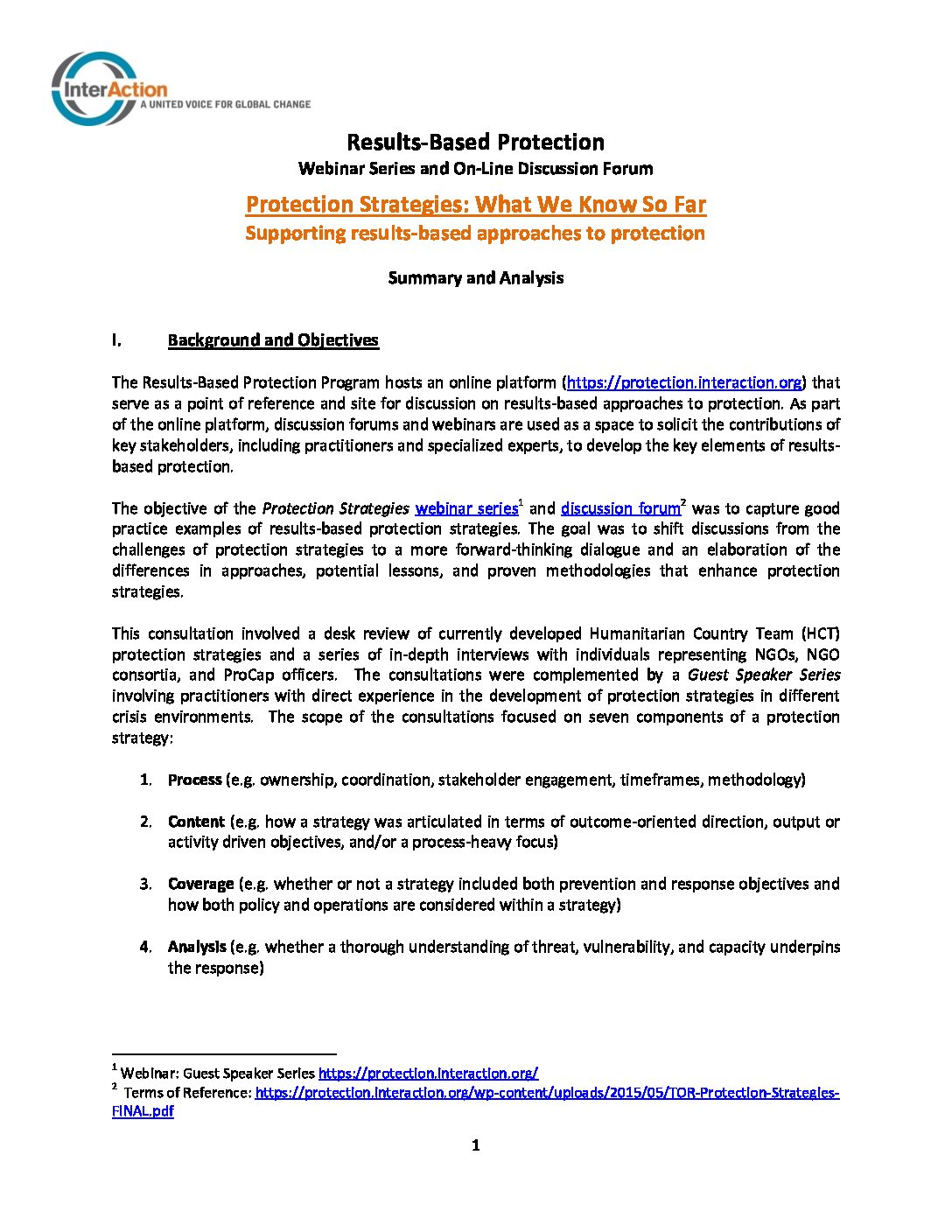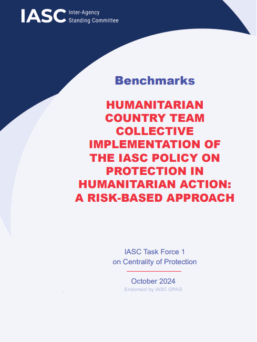The consultation findings validated several key elements identified through the Results-Based Protection Program. Although the discussion was rich and provided an opportunity to reflect on the methods and quality of protection strategies, there is still a need to further unpack what it will take for protection strategies to help achieve results. Factors that may improve the strategic planning process include:
- Agree what is meant by “protection” and “protection strategy” as a starting point to develop priorities and a collective vision for protective outcomes
- The quality of the methodological approach used to develop a protection strategy has significant bearing on whether or not protection outcomes can be measured and ultimately achieved. The following components were identified as essential for strategic planning for protection:
- Invest in and undertake a context-specific protection analysis
- A culture of inclusivity
- Build from the ground up and identify community-based protection as the starting point for the response
- Articulate how the desired protection outcome will be achieved
- Methods and facilitation of the strategic planning process impact the quality, ownership, and uptake of the protection strategy
- Regularly monitor the causal logic behind the protection strategy to identify shifts in the situation that may require adjustments in the response.
- Disaggregation of risk supports a problem-solving approach. A protection strategy must begin by identifying and articulating the actual risks and describing the causal logic behind the necessary action
Although these consultations validated elements of results-based protection which have already been identified and could strengthen the quality of a protection strategy, it remains to be seen whether and how they may enable achievement of protection outcomes? The relationship of a protection strategy to program design and implementation needs to be further explored in order to assess the relevance of a protection strategy to measurably reduce risk. Some questions for further exploration include:
- What should drive the prioritization of issues and the response? Does prioritization help with better results when it comes to measurable protection outcomes?
- How should a protection strategy address the comparative advantage for humanitarian actors alongside other potential actors to address a protection issue?
- A protection strategy should reflect an agreed vision for addressing a protection issue. Given the need for multiple actors to contribute to the achievement of a protection outcome, what is needed to bring about a common vision? Does the absence of a common vision among actors impact the potential to achieve measurable results? How can a causal logic exercise within strategic planning processes capture the different assumptions and theories of change by multiple actors?
- How are different actors, including donors, held accountable within the protection strategy?



